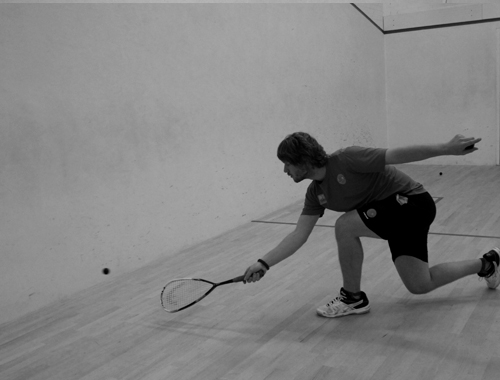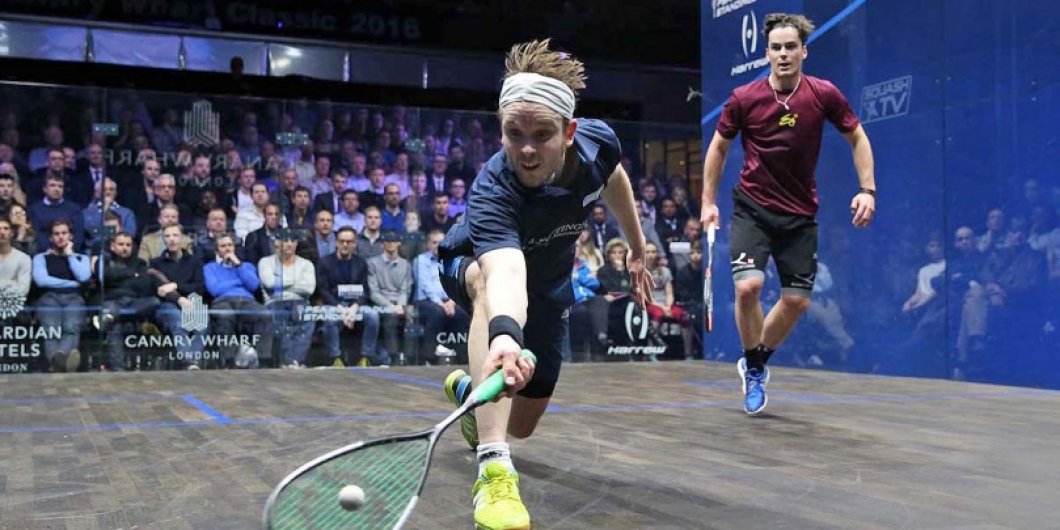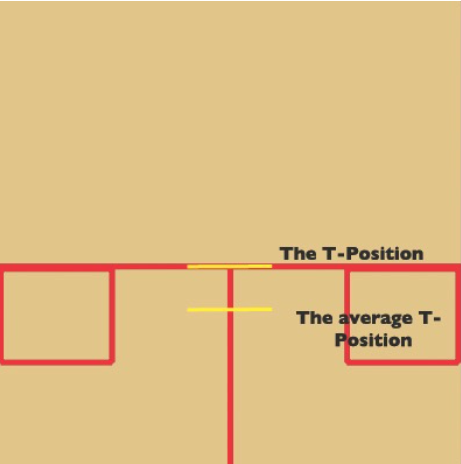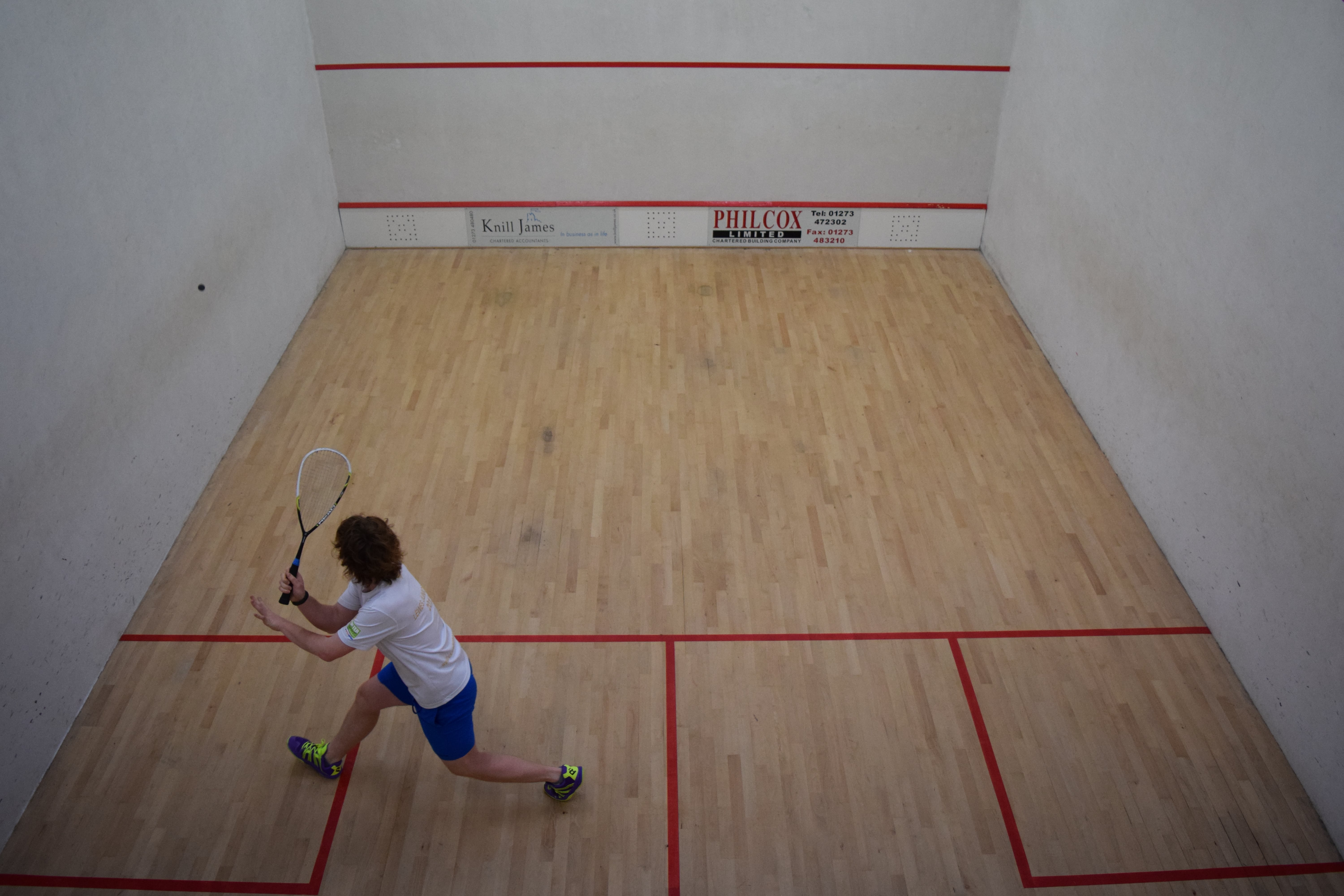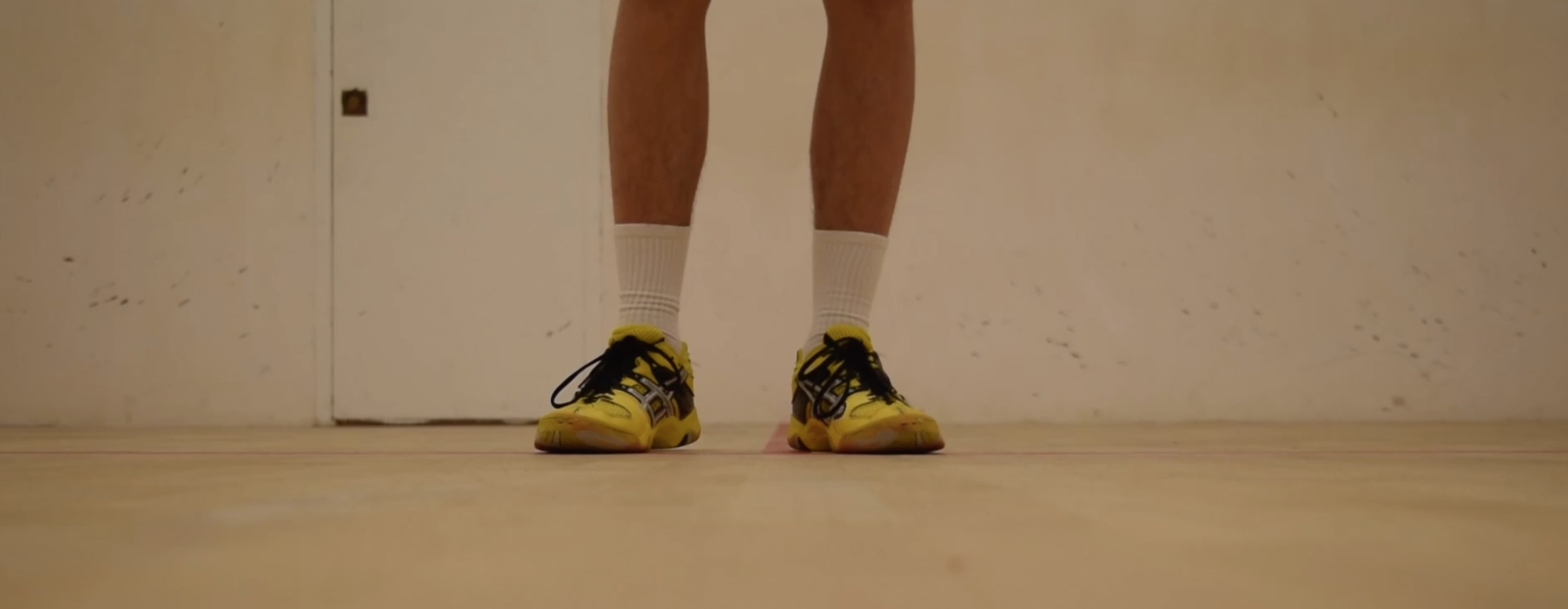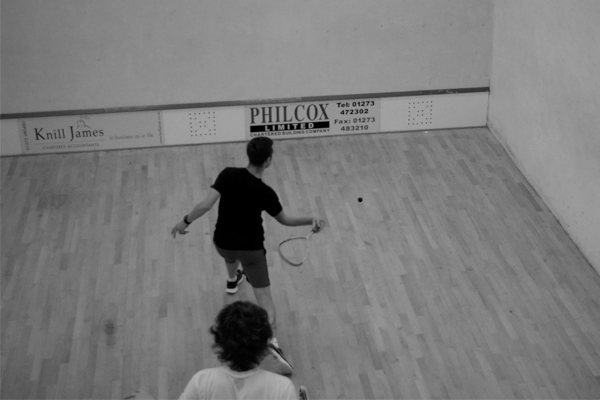I always found that having a tall and rather large build meant that I was vulnerable to counter drop or short shots; short shots which my opponent plays in response to my short shot. This was most apparent when I played a short shot from the front of the court and so was required to move into the front corner twice in quick succession; once to play my shot and then again to cover their counter.
How can you improve your movement to deal with counter short shots?
Weight transfer is the most important thing when you are moving out of the front corner, as if you keep your centre of gravity in the right place you can leave yourself the option to move into the front again.
The first part of the weight transfer is the lunge, squat or planting of your legs when you go to strike the ball. If you are lunging to an extent – whether it is as full stretch or a fairly shallow lunge – try to make sure you are using your back leg and non-racket arm to help you move out of your shot. This is done by allowing your back leg to drive through towards the ball as you follow through and keeping your non-racket arm back and out to the side. The momentum of the back leg driving through and the non-racket arm’s balance can then be used to help you move out of a shot and back towards the T-Position.
Now comes the part where you need to really watch your weight transfer. Like a sprinter moving out of the starting blocks, it is really important that you stay low as you move backwards to the T-Position. It is very easy to spring out of a lunge and end up standing completely upright, but by doing this you will shift the majority of your weight backwards towards the T-Position, thereby throwing all of your eggs in one basket and making it very difficult to go forwards again. If you ‘unfold’ yourself gradually and stand upright again only as you get back to the T-Position, you will find it easier to shift your weight and move back towards the front corner again if necessary.
Whilst you are staying low and unfolding, you need to make sure you are taking small steps back towards the T-Position. The lunge might be a big step (of course assisted by the back leg and non-racket arm), but after that, you need to make sure that your steps are small and skimming the floor. Small, low steps also help to keep your weight in a more neutral position, as when you take big steps in any direction, you are committing your weight and therefore yourself to that direction and making it very difficult to change. That won’t help at all here given you need to go back in the opposite direction to which you were previously moving.
Moving with shorter, lower steps is comparatively easy to practice compared with the lower centre of gravity, which can take a bit more practice and awareness. Ghosting and practicing the movement pattern is a very good way to start so that you can really feel the size and height of your steps, and also where your weight is as you move. You can then build that up by having someone feed you shots to the front corner, then the front corner and the back corner in a fixed order and lastly the front and back corner at random. You can then swap sides and add in more shots to make it more match-like.
One final thing; it can also help to change your grip as you move towards the ball. As you are taking your first step towards the front corner again, shift your hand down your grip to the very bottom of the handle in order to give yourself a touch more reach. You can read more about that on our post here.
Best of luck in maintaining a low centre of gravity and covering the front corners repeatedly!
